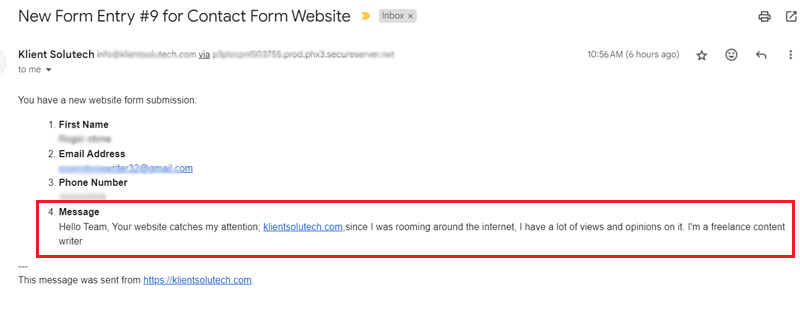Freelancing offers a unique way to get contractual work with multiple clients or companies. It operates within a remote work environment, allowing individuals to work from home or any location and often at their preferred times. Beyond merely a method of employment, freelancing embodies a lifestyle where individuals choose projects aligned with their interests and availability.
If you’re new to Freelancing, watch the video below:
Read More: What is freelancing and how does it work
People of all skill levels and ages can showcase their talents and services online, and get paid for their work. While freelancing may seem like a recent phenomenon spurred by technology, its roots trace back centuries. Skilled professionals have long provided their services to specific companies and causes.
In today’s employment landscape, freelancing has become a prevalent option. With the advent of the internet and global connectivity, individuals can now get work or jobs from companies worldwide. This flexibility not only grants freedom but also opens doors to higher payouts and diverse opportunities.
Freelancing isn’t only advantageous for individuals; hiring freelancers for specific tasks or timeframes is also cost-effective, productive, and beneficial for companies and small business owners.
Over the past decade and a half, platforms such as Upwork, Fiverr, Freelancer, and Guru have surged in popularity. These platforms serve as hubs for finding projects, and clients, or promoting services across various fields, including marketing, logo design, web development, administration, and more.
Challenges Faced by Freelancers on These Platforms
The issue arises when individuals limit their perception of freelancing solely to platforms like Upwork or Fiverr. However, freelancing encompasses much more than that. These platforms serve as one method of connecting and communicating with clients.
Each freelance platform operates as a filter, onboarding candidates based on their expertise and specific conditions. They function akin to listing or directory websites, facilitating the discovery of workforce for projects or the acquisition of projects themselves. Users post jobs or projects on these platforms, and interested candidates can apply accordingly.
I think around 2 years ago, Upwork introduced a requirement for “connects” to apply for projects. This means that each application necessitates the expenditure of a certain number of connections, ranging from 1 to 50 or more. Freelancers have various plans available, including free and paid options. Premium plans offer additional features, freer connects, and more competitive options, while free plans typically provide only a limited number of free connects each month.
We’re not including any Upwork social posts here, but if you come across them on social media, you might notice that many freelancers express concerns about the high cost of connects.
Getting projects on Upwork can be challenging, that was even before Connects, but now mandatory to purchase Connects, which can range from $5 to $100 or more. This system aims to ensure that only serious and skilled freelancers apply for jobs. However, it can be financially burdensome for beginners or those earning modest incomes through Upwork.
Additionally, freelancers are typically required to allocate 10% to 20% of their income to these platforms after getting paid by clients.
Consequently, the cost of working on Upwork may be high, with restrictions on entry and operation within the platform. If new freelancers invest in connects and fail to secure work, it becomes imperative for them to explore alternative options beyond Upwork and other freelance platforms.
Freelance platforms come with their own set of restrictions and settings. Many erroneously equate having projects on Upwork with being a freelancer or working exclusively on Upwork as freelancing.
However, freelancing extends beyond these platforms. So as promoised in the excerpt, we will explore alternative methods to work as a freelancer or freelancing beyond traditional freelance platforms.
Better and more effective ways to get clients or Freelance
While these methods may seem challenging at first, they are the correct approach to effectively promote your services online and establish yourself as a successful freelancer.
These methods are beneficial for individuals across various fields, including content creators, video editors, graphic designers, writers, developers, and marketers. Actually, these are ways that represent the true essence of freelancing for anyone pursuing independent work.
1. Direct Outreach and networking
If you’re not familiar with direct outreach and networking, it involves reaching out to potential clients directly through emails, messages, or networking events.
For instance, take a look at the image below. We were contacted by a freelance writer through the contact form on our website. You’ll need to follow a similar approach.

You can start by researching potential clients in your industry, crafting personalized messages or emails highlighting your skills and expertise, and attending relevant networking events either in person or virtually.
By networking effectively, you can not only increase your chances of finding freelance work but also build long-term relationships with clients, leading to repeat business and referrals.
2. Take advantage of platforms like YouTube
If you’re unsure about using YouTube to promote your freelance services, then it’s a platform that you can also utilize for freelancing. Where you can create and share videos showcasing your skills, expertise, and portfolio.
You can start by brainstorming video ideas related to your niche or industry, create informative and engaging content, and optimize your videos with keywords and tags to improve visibility.
For example, create each video like you’re pitching your ideas to a client or a sales pitch or a cover letter. Those need a person or freelance as you will contact.
Utilizing YouTube can help you reach a wider audience, establish yourself as an authority in your field, and attract potential clients who may be searching for your services online.
3. Build your brand – it can be your website
Building your brand through your website involves creating a professional online presence where you can showcase your work, skills, and services. Think of it like a profile on the Freelance platform.
Your website can serve as a centralized hub for potential clients to learn more about you, view your portfolio, and contact you for freelance opportunities.
To get more targeted traffic you can also use the power of content marketing. You can start with blogging. Blogging can help you establish credibility, attract organic traffic to your website, and showcase your expertise to potential clients.
There are various other advantages of having your website. One of the best is that ‘This is a website in which you don’t have to bid, don’t have to buy connect’ but companies and clients will contact you directly. No filter and no condition.
Please visit the posts below for more details:
How to get more clients with a portfolio website
The Power of Creating a Portfolio Website to Boost Client Base
4. Advertise on search engines and Social Media
If you find yourself having to invest money in buying connections on freelance platforms like Upwork. just to secure clients, it might be more beneficial to consider advertising your services directly to clients. Instead of paying fees on these platforms, you could invest in targeted advertising through Google Ads and social media.
Why pay fees elsewhere when you can invest in promoting your own brand? By directing your advertising budget towards your own platform, such as your website or portfolio website, you’re not only bypassing platform fees but also building a valuable asset for your freelance business. This approach allows you to have more control over your marketing efforts and can potentially lead to a higher return on investment in the long run.
Social media ad costs vary depending on factors like platform, audience, and ad objectives, typically ranging from a few dollars to hundreds per campaign. Similarly, search engine ad costs, such as Google Ads, can range from a few cents to several dollars per click, depending on keyword competitiveness and bid strategy.
However, these methods offer a more professional and serious approach to freelancing. You can pause the campaign once you have secured clients, and as you build a solid client base, you may find that you no longer need to advertise at all.
Overall, each of these methods presents diverse opportunities for securing freelance work while offering additional advantages like flexibility, lower costs compared to traditional marketing methods, and the potential to cultivate valuable assets such as your personal brand, blog, channel, groups, and online presence.
By learning and using these strategies effectively, you can significantly bolster your prospects of success as a freelancer and realize your objectives within the freelance industry. Whether you operate on Upwork or sell your gigs on Fiverr, incorporating these approaches enables you to tap into multiple income streams, acquire clients from various sources, and establish stable monthly income streams with regular clients over the long term.
Whether or not you use Upwork, I believe and do that these ways are crucial for any professional aspiring to thrive as a freelancer.
Found this helpful? Let others know!




